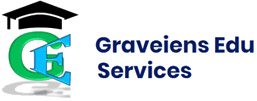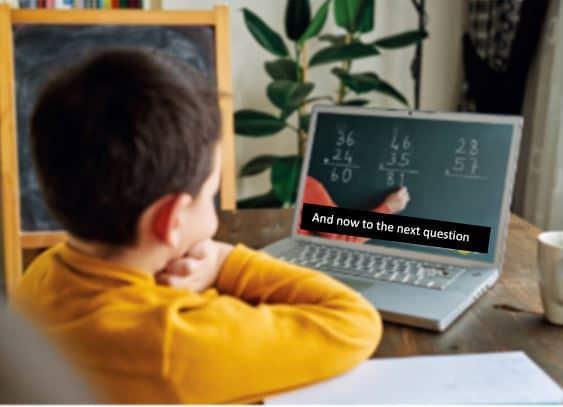In this fast paced world, technology is reigning supremely in every sector. The education industry is no exception. In this digital age, where educational resources are increasingly shifting online, ensuring accessibility for all learners is very important. But how do we make online videos accessible to the masses, which includes even the natives and the deaf? It is by using closed captioning in education.
Closed captioning is one of the vitals for making these videos accessible. From enhancing comprehension for students with hearing impairments to aiding language acquisition and improving focus for all learners, closed captioning plays a vital role in education.
Let’s dig a bit deeper to find out how the importance of closed captioning in education extends far beyond just accessibility.
What is Closed Captioning?
It primarily involves displaying text on a screen that corresponds to the audio content of a video, providing a written transcript of dialogue and other important auditory information. This text thereafter helps students to engage with video content more effectively.

Why Closed Captioning?
Imagine sitting in a classroom or participating in an online course without being able to fully understand what the instructor is saying. For students with hearing impairments, this becomes a daily challenge. Thus, to overcome these challenges, we need proper accommodation and implementation of closed captioning in education. Let’s take a further look at why we need closed captioning.
Comprehensive Learning Environment:
It instills a sense of inclusivity by ensuring that all students, regardless of their hearing abilities, have equal access to educational content. It promotes a sense of belonging and eliminates barriers to learning.
Language Support:
Ever checked the CC option on YouTube? Yes, it stands for closed captions. It helps native speakers to understand the context and meaning by displaying the text on screen. This is another reason for implementing closed captioning in education. Providing a written representation of spoken words would help non-native learners comprehend the content easily. Also, closed captioning would reinforce vocabulary and improve language skills.
Better Understanding:
As it offers a visual representation of auditory information, it makes it easier for students to grasp complex content and follow the lectures accordingly. Irrespective of whether the learner has a hearing impairment or not, this point goes hand in hand with anyone.
Accommodation of Different Learning Styles:
People learn in different ways, and some individuals may find it easier to process information visually rather than audibly. Closed captioning accommodates these varied learning styles, catering to the needs of diverse learners.
Review Tool:
Captioning can also serve as a valuable tool for review and revision. It allows students to revisit content at their own pace and ensure they don’t miss any important information.

How to Use Closed Captioning in Education:
The popularity of online learning platforms has soared in recent years, offering flexible alternatives to traditional classroom settings. Many educational institutions now record and distribute lectures and instructional animated videos online. Moreover, many educational institutions now have their own online portals.
These portals thus act as the medium through which these videos become reachable to the masses. By captioning these videos, educators ensure that all students can benefit from the content, whether they’re attending in person or remotely.
Thus, adding closed captions to these educational materials ensures that all students can fully participate and understand the content.
Challenges of Using Closed Captioning in Education:
In spite of the array of benefits, implementation of closed captioning in education can pose challenges for schools and institutions, particularly in terms of cost and resources. However, advancements in technology have made captioning more accessible and affordable than ever before.
Automated captioning tools and services offer a cost-effective solution for generating captions quickly and accurately, making it easier for educators to integrate closed captioning into their teaching practices.
Final Words
As we finally come to the end of our talk, we more or less have a clear picture as to why closed captioning in education has become an indispensable need of the hour. It not only promotes accessibility of online education resources but also enhances comprehension and better retention of materials. By providing visual reinforcement of spoken words, captioning engages multiple senses, reinforcing learning and accommodating diverse learning styles.
With students accessing educational content from a variety of devices and locations, captioning ensures continuity and flexibility in learning, allowing students to engage with material on their own terms at their own pace.
So, whether you are a learner or an educator, it is a big relief that from entertainment areas, closed captioning has paved the way even in the education sector.
FAQs
What are the different types of closed captioning formats used in education?
Closed captioning formats include various segments like open captions and closed captions embedded within digital media. However, each format offers its own levels of flexibility and accessibility, catering to different educational environments and platforms.
What are the benefits of automated closed captioning solutions?
Automated closed captioning solutions offer efficiency and cost-effectiveness, automatically generating captions through speech recognition technology. While not always perfect, these solutions provide a starting point for captioning and can be edited for accuracy as required.
Where can teachers find resources and support for implementing closed captioning in education? Educators can access resources and support from disability services offices, professional organizations, online communities, and educational technology providers. Training workshops, webinars, and online tutorials also offer guidance on best practices for closed captioning integration in educational settings.



Comments 0